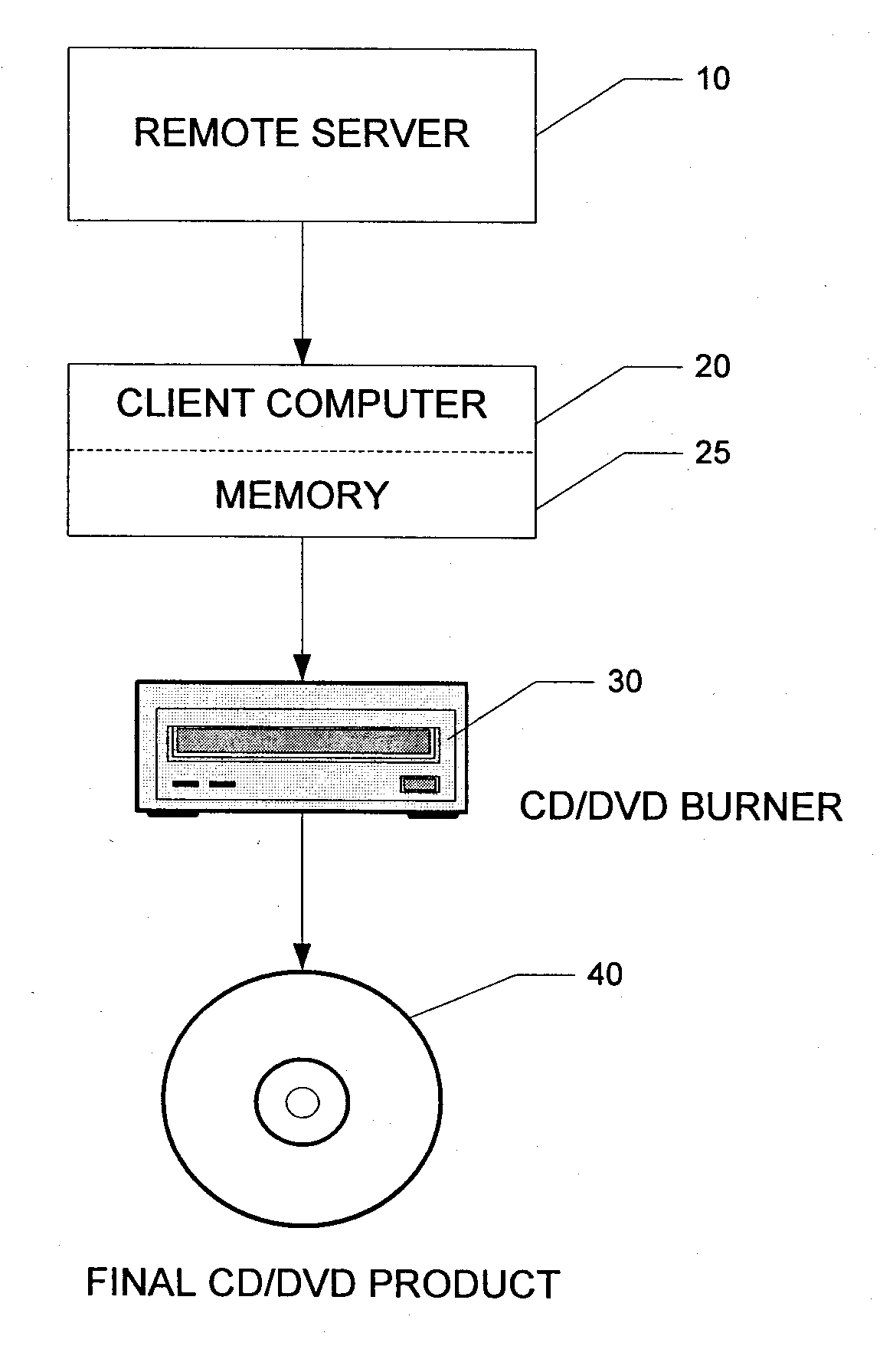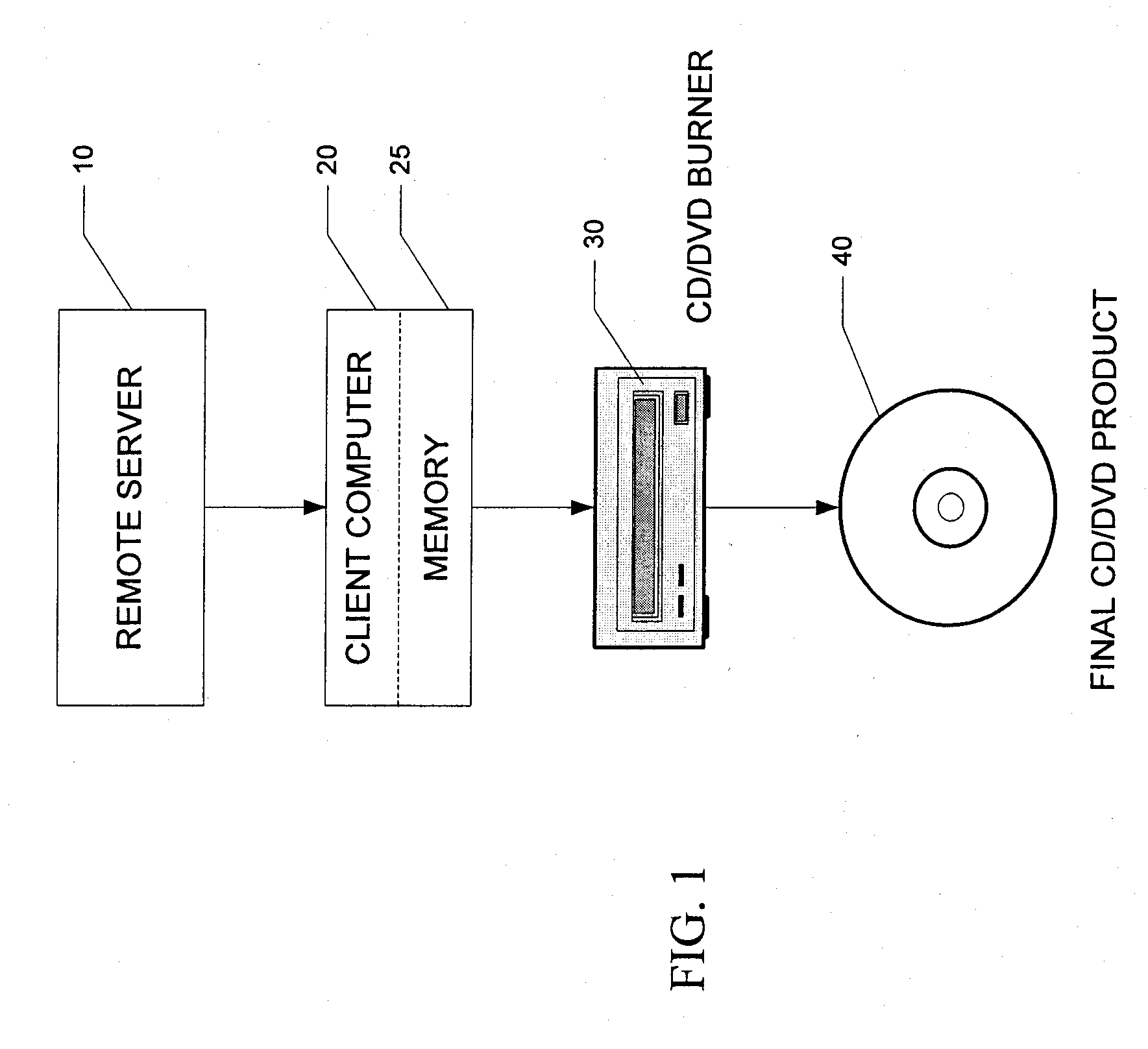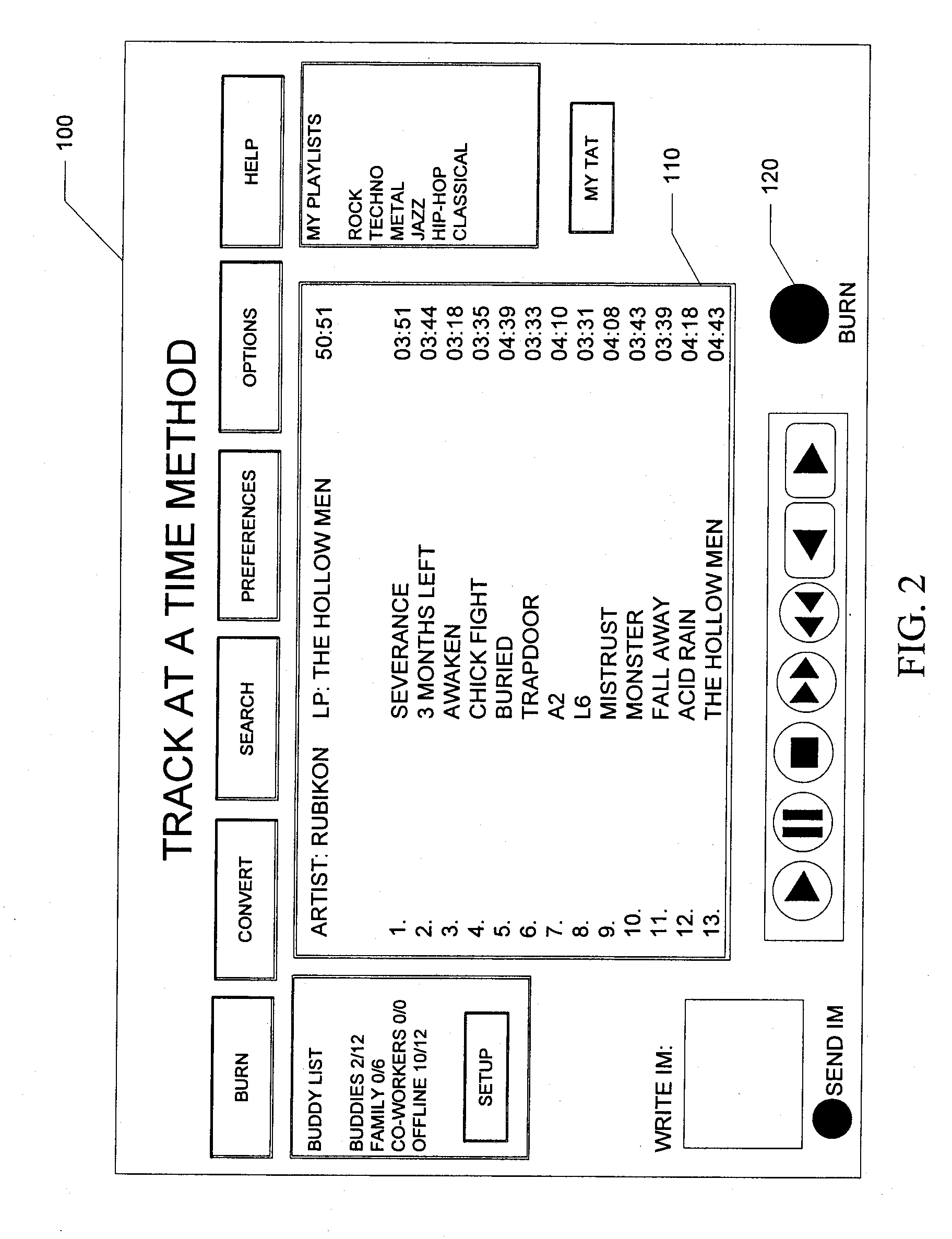[0006] The increase in the number of households using
broadband Internet connections and the increasing speed at which
broadband is able to transmit data continues to make downloading a much quicker and more convenient experience for consumers. This has resulted in a greater number of individuals acquiring downloadable media over
the Internet. Currently, cable and DSL modems generally provide 3-7 Mbps connections. Further advancements in cable and DSL as well as the development of
fiber connections will make available connections capable of speeds
ranging from 20-30 Mbps in the foreseeable future. This growth will intensify
consumer demand for downloading media in general and increase the demand for larger, higher-quality digital downloads. An
advantage of the invention is that it facilitates the distribution of these larger files to
removable media more effectively and efficiently than what currently exists.
[0007] Blank CD and DVD sales also continue to rise dramatically as pre-recorded CD sales have declined, suggesting that individuals are burning more music and other media at home. Blank CDs have achieved sales levels which now surpass the sales levels of pre-recorded CDs. While demand for compiling audio and video products at home increases, the technology method of the present invention offers consumers an option to conveniently burn the highest quality digital products available directly to blank media discs in a one-step process. Also of note is the fact that DVD-R sizes are increasing dramatically, from the currently common 4.7 GB DVD−R to the newer double-layer 8.5 GB DVD+R. In the future, it is estimated that DVD sizes will grow up to 50 GB and possibly beyond.
[0008] It would be valuable to introduce an invention that enables consumers to conveniently obtain through digital means original and other high-quality media products in a one-step process. SUMMARY OF THE INVENTION
[0009] The present invention provides the ability to push digital files from a remote
server to a computer's memory and simultaneously burn the individual downloaded files to removable storage media such as CDs and DVDs in a one-step process. In the case of audio, the files that are pushed from the remote
server are compressed with a
lossless compression scheme. The method of simultaneous downloading, re-converting, burning and erasing the files from a computer's memory after they have been burned to disc allows users to avoid allocating significant amounts of hard drive space and enables users to download larger amounts of data in a shorter amount of time than may be possible otherwise.
[0010] In an exemplary embodiment, the method of the invention presently serves three primary functions: (1) to allow consumers to download and obtain CD-quality audio directly to
recordable compact disc (CD-R) or rewritable
compact disc (CD-RW) in a one-step process and reasonable amount of time without having to allocate large amounts of hard drive space, (2) to allow consumers to download video files directly to recordable
digital video disc (DVD-R) or rewritable
digital video disc (DVD-RW) in a one-step process and reasonable amount of time without having to allocate large amounts of hard drive space, and (3) to allow consumers to download other types of digital content directly to
removable media discs, such as video games and 24-bit audio, in a one-step process and reasonable amount of time without having to allocate large amounts of hard drive space.
[0011] For music and video distribution, the process allows the delivery of original, high-fidelity CD-quality audio and original resolution video to users through a more convenient process. The inventive technology may be used to write any type of digital media delivered from a network directly to
optical disc. These media types include, but are not limited to, DVD media, High-Definition DVD media,
Surround Sound 5.1 audio, AIFF, MPEG, AAC, h.264, MPEG4, FLAC, OGG, WMA, Apple Lossless and SACD.
 Login to View More
Login to View More  Login to View More
Login to View More 


